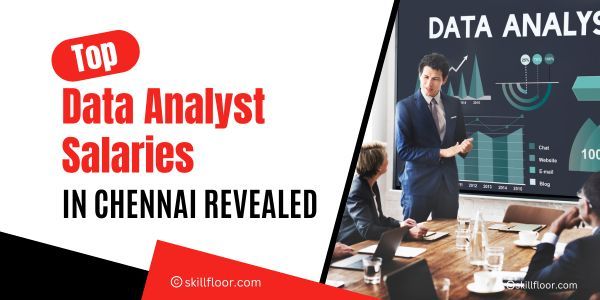Machine Learning vs. Traditional Statistical Analysis in Data Analytics
Explore the vital differences between Machine Learning and Traditional Statistical Analysis in Data Analytics. Learn which approach suits your data-driven goals.

In today's data-driven world, effective decision-making hinges on robust data analytics. This outline will explore the key differences between machine learning and traditional statistical analysis, two fundamental approaches in the field. Machine learning, with its data-driven, predictive power, and complex models, stands in contrast to traditional statistical analysis, which relies on hypothesis testing and simpler models. By understanding when to use each approach, and even considering hybrid models, we can harness the full potential of data analytics in informed decision-making.
Traditional Statistical Analysis
Traditional Statistical Analysis is a foundational approach in data analytics, relying on established principles and methodologies. It involves the application of statistical techniques like regression, hypothesis testing, and ANOVA to draw meaningful insights from data. This method is characterized by its emphasis on probability theory and the use of sample data to make inferences about a larger population. It excels in scenarios where causality and relationships between variables need to be rigorously understood. Industries like economics, social sciences, and healthcare heavily rely on these methods. However, its effectiveness can be limited in handling large, complex datasets and making accurate predictions in dynamic, rapidly changing environments. This makes it essential to consider the strengths and weaknesses of Traditional Statistical Analysis when choosing an approach for data analysis.
Machine Learning
Machine learning is a branch of artificial intelligence (AI) that focuses on the development of algorithms and models that can learn and make predictions or decisions based on data. Its core concepts revolve around the utilization of training data to improve the performance of algorithms. There are various types of machine learning, including supervised, unsupervised, and reinforcement learning, each with its unique approach and applications. Machine learning's strengths lie in its ability to handle large and complex datasets, automate decision-making, and adapt to changing data patterns. However, it also has limitations, such as the need for substantial training data and the potential for overfitting. Machine learning finds its most effective applications in industries like healthcare, finance, e-commerce, and marketing, where it can provide valuable insights, automate processes, and enhance decision-making.
Key Differences
-
Approach to problem-solving: Traditional statistical analysis relies on predefined rules and assumptions, making it a rules-based approach. In contrast, Machine Learning employs pattern recognition and learns from data, allowing it to adapt to a wider range of scenarios.
-
Handling of complex, unstructured data: Machine Learning excels at processing large volumes of unstructured data, such as images, text, and audio, by discerning intricate patterns that may be challenging for traditional statistical methods to handle.
-
Adaptability and scalability: Machine Learning models can adapt to changing data patterns without manual adjustments, making them highly adaptable. Additionally, they can scale seamlessly to handle vast datasets and complex tasks, offering a significant advantage over traditional statistics.
-
Automation of decision-making: Machine Learning models have the capacity to autonomously make decisions based on patterns learned from data, enabling automation of tasks that would be time-consuming or impractical with traditional statistical analysis methods. This can lead to more efficient and timely insights for decision-makers.
Data Requirements and Preprocessing
In Machine Learning (ML), ample high-quality data is crucial for training robust models. Larger datasets with diverse samples often lead to more accurate predictions. Preprocessing steps, such as feature engineering and outlier handling, play a pivotal role in enhancing model performance. These steps help refine the input data and ensure it is suitable for the chosen algorithm.
Traditional Statistical Analysis, on the other hand, may require less data compared to ML. However, it demands a specific focus on the assumptions of statistical tests. Data quality is paramount, as even small errors can lead to misleading conclusions. Preprocessing in this context involves techniques like data transformation and variable selection to meet the assumptions of statistical models. Careful consideration of data quality and quantity is vital in both approaches for accurate and reliable results.
Model Interpretability and Explainability in Data Analytics
Model interpretability and explainability are critical aspects of data analytics. They involve understanding and clarifying how machine learning models arrive at their decisions. Interpretability helps in building trust and confidence in model predictions, especially in high-stakes applications like healthcare or finance. Explainability techniques, such as feature importance analysis or visualizations, provide insights into why a model makes a specific prediction, making it easier for stakeholders to comprehend and act upon the results. In the evolving field of data analytics, prioritizing model interpretability is essential for transparency and responsible AI deployment.
Resource and Skill Requirements in Data Analytics
In the field of data analytics, success relies on having the right resources and skills. This includes access to robust computing power, data storage, and data processing tools. Additionally, a proficient team with expertise in data collection, cleansing, and analysis is essential. Skills such as data visualization, programming (e.g., Python, R), and domain knowledge are vital for making informed decisions from data. As data volumes grow, the need for scalable infrastructure and continuous skill development becomes increasingly important to stay competitive in the data analytics landscape.
Adoption Challenges and Considerations in Data Analytics:
Implementing data analytics, whether through Machine Learning or Traditional Statistical Analysis, comes with its set of challenges. Firstly, organizations may face resistance from stakeholders unfamiliar with these techniques. Proper training and change management strategies are crucial. Additionally, ensuring data quality and integrity is paramount for accurate insights. Balancing the need for sophisticated models with interpretability can also be a challenge. Lastly, staying updated with evolving technologies and best practices is vital for sustained success in data analytics endeavors.
Hybrid Approaches and Integrations
In the dynamic field of Data Analytics, it's becoming increasingly evident that a one-size-fits-all approach doesn't always suffice. Thus, hybrid approaches and integrations are gaining traction.
Combining elements of both traditional and machine learning techniques can harness the strengths of each approach. This hybridization allows for a more comprehensive analysis of complex data sets. For instance, using traditional statistical tests alongside machine learning algorithms can provide deeper insights and enhance predictive accuracy.
Optimizing analytics processes for specific use cases is another advantage of embracing hybrid approaches. By tailoring the choice of methods to the unique characteristics of a problem, organizations can achieve more effective and efficient data-driven solutions. This adaptability is particularly valuable in addressing diverse business challenges.
Incorporating hybrid approaches and integrations into Data Analytics strategies offers a versatile toolkit for tackling the complexities of today's data landscape and unlocking valuable insights for informed decision-making.
Future Trends and Considerations
The field of data analytics is constantly evolving, driven by emerging technologies and innovative techniques. Understanding these trends is crucial for staying at the forefront of the industry.
Emerging Technologies and Techniques
As we move forward, expect to see the integration of cutting-edge technologies such as artificial intelligence (AI), blockchain, and edge computing into data analytics. These technologies will enable more sophisticated data processing, analysis, and insights generation. Quantum computing also holds the promise of revolutionizing data analytics by handling complex computations at an unprecedented speed.
Implications for Decision-Making
The future of data analytics will have far-reaching implications for decision-making in various industries. With the increasing use of AI and machine learning, organizations will be able to make data-driven decisions in real-time, optimizing operations, and enhancing customer experiences. Ethical considerations and data privacy will also play a more prominent role as the use of data analytics continues to expand.
Staying informed about these future trends and considerations is vital for professionals and organizations in the field of data analytics to harness the full potential of data for informed decision-making and innovation.
The choice between Machine Learning (ML) and Traditional Statistical Analysis in Data Analytics depends on various factors. Traditional statistics excel in scenarios where interpretability and simplicity are paramount, while ML shines when handling large, complex datasets for predictive tasks. To make the right decision, organizations and analysts must carefully evaluate their specific needs and contexts, considering factors such as data volume, desired outcomes, and available resources. Ultimately, both approaches have their place in the data analytics toolkit, and a judicious blend of the two may often yield the most valuable insights and solutions.

























































